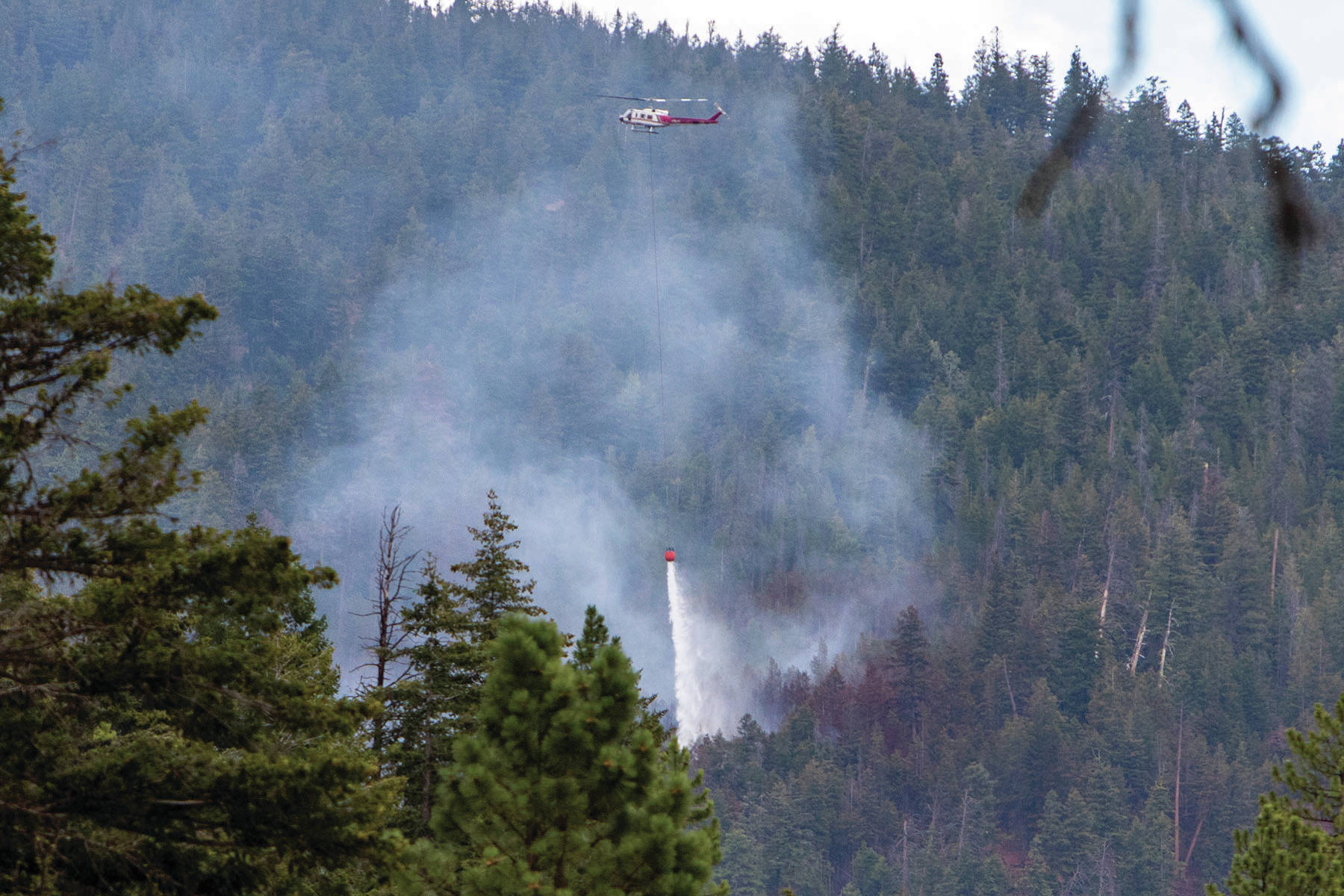In 29 years of fighting fire from the sky, Kevin Cochrane has never witnessed an accident, or even a near miss.
“They are few and far between,” he said in an interview with Black Press. “They do happen once in a while but it certainly isn’t a common thing.”
Cochrane is the air operations branch director responsible for the Placer Mountain and Snowy Mountain fires.
On any given day over the past week he has co-ordinated the activities of up to a dozen helicopters actioning the fires near Keremeos.
While the aircraft are able to refuel at a staging site closer to the fires, they fly in and out of Princeton airport shuttling crews and equipment back and forth from the fire lines.
BC Wildfire contracts with a number of different commercial aircraft companies, and their pilots and engineers have specific training, he said.
Their tasks include surveillance and finding access points, conducting aerial ignitions for controlled burns, and long-lining, which involves dropping nets of equipment to fire crews on the ground using lines that are anywhere from 50 to 250 feet long.
“The big one is bucketing support to drop the water,” said Cochrane.
While there have been reports this year of recreational boaters interfering with bucket crews trying to pick up water, that has not been a problem for the Placer Mountain Complex of fires, he said, as they are using remote alpine water sources.
“You wouldn’t find evidence of a human being on these lakes and rivers.”
Pilots assigned to fire crews must also be competent in hover exits, which is dropping passengers onto the ground without landing, if the terrain is too uneven to safely set down.
With all those helicopters in the air at once, and no radio control tower equipped with radar to track them, communication becomes key in keeping the pilots safe. They use radios to communicate.
“The big piece is that everyone is using the same frequency so they can stay in touch with each other.”
In the case of large fires, like those on Placer and Snowy Mountain, a coordinating pilot is put in the sky to observe aircraft activity and direct traffic.
The maneuvers are not without risk, he said, and the environment demands constant adjustment to conditions.
“They called in the retardant bomber the other day on Snowy but they couldn’t get in. The winds were all over the place and it was smokey quite quickly. The didn’t have the visibility to drop.”
While Cochrane is not a pilot he has logged more air miles than many of the people flying for him today.
“It’s an interesting job.”
To report a typo, email:
publisher@similkameenspotlight.com.
andrea.demeer@similkameenspotlight.com
Like us on and follow us on .



